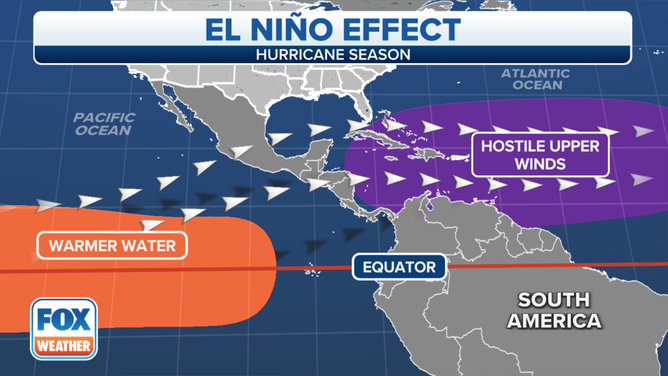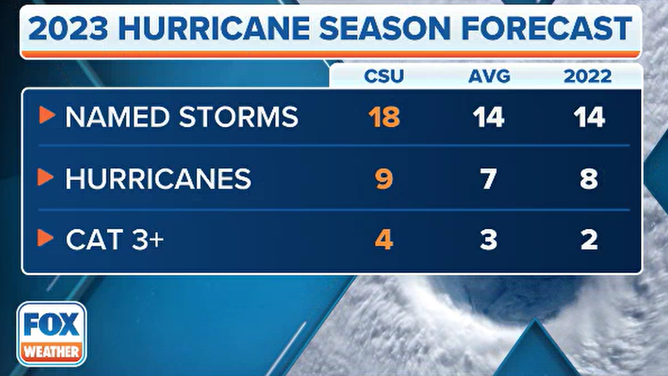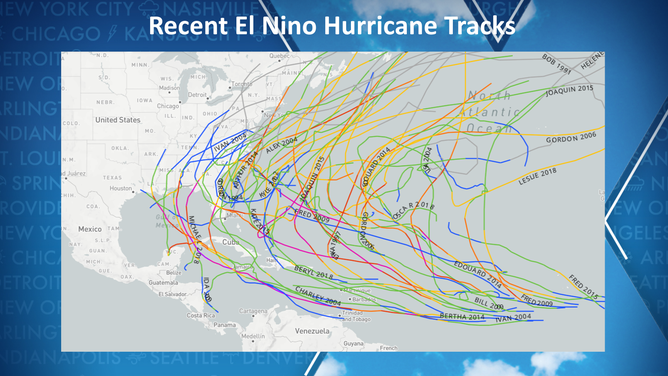Will the strengthening El Niño cause the hurricane season to shut down early?
So far this year, 20 storms have formed, six have strengthened into hurricanes and three have become majors. Names still left to use this season include Vince and Whitney.
Tropical Storm Tammy becomes the 20th cyclone of the 2023 season
Tropical Storm Tammy is expected to impact the Caribbean Islands on Friday and over the weekend.
As the hurricane season nears the final month for activity, it’s anyone’s guess as to when the season will shut down and end the flurry of tropical activity
So far this year, 20 storms have formed, and six have strengthened into hurricanes, which is largely in line with expectations.
The season got off to an early start with a subtropical storm forming in January in the western Atlantic. The out-of-season activity was a possible indication that water temperature trends would be favorable for more tropical cyclone activity later in the season.
Complicating matters for forecasters was the emergence of an El Niño during the usual height of activity.
As a general rule of thumb, forecasters have long said that when an El Niño is in charge in the Pacific, it generally means decreased activity in the Atlantic, but that has not been the case this year.
The 2023 El Niño has not led to cooler water temperatures in the Atlantic, hostile winds across the basin or a host of other issues that cyclones must contend with.
WHAT TO EXPECT IN TROPICS AS HURRICANE SEASON ENTERS OCTOBER

Significantly warmer water in the key equatorial belt typically correlates with limited hurricane development.
(FOX Weather)
Factors such as a beneficial Madden-Julian Oscillation (MJO) or even climate change may be more impactful to the season than whether the world was in El Niño, La Niña or neutral status.
Scientists will likely need many more seasons of El Niño events to determine whether the age-old adage of reduced activity is still meaningful or whether too much stock is being put into these global weather patterns and their tropical cyclone influences.
As climate change happens over time, well-known phenomena that previous generations might have grown up learning are now simply outdated.
Climate experts have seen these changes with tornado hotspots, animal migrations and other annual events that still exist but now occur in an altered form.
WHY TORNADO ALLEY IS SHIFTING EAST

CSU updated 2023 Atlantic hurricane season forecast
(FOX Weather)
NOAA contends climate change is disrupting weather patterns around the world, but precisely how is still an open-ended question.
"No two El Niños or La Niñas are perfectly alike," Antonietta Capotondi, a scientist working at NOAA’s Physical Sciences Laboratory, previously stated about the changing impacts associated with the El Niño Southern Oscillation.
NOAA said studies have shown that the ENSO will continue to impact tropical cyclone genesis across the world oceans, but to what degree is still not entirely understood.
Without the crutches of knowing how seasons behave, forecasters could be in a more difficult position in determining how much activity to expect in the final weeks of a season.

Last 10 hurricane seasons under El Nino conditions
(FOX Weather)
Under a typical El Niño, forecasters would have largely presumed the season would be ending sooner than usual due to hostile atmospheric winds and cooler water temperatures, but the 2023 season has acted anything like a typical El Niño regime.
The ending of the season on November 30 does provide guidance as to when water temperatures are typically too cool for formations, but as seen this year, just because the season starts and ends on specific dates, it doesn’t preclude cyclones from forming.
